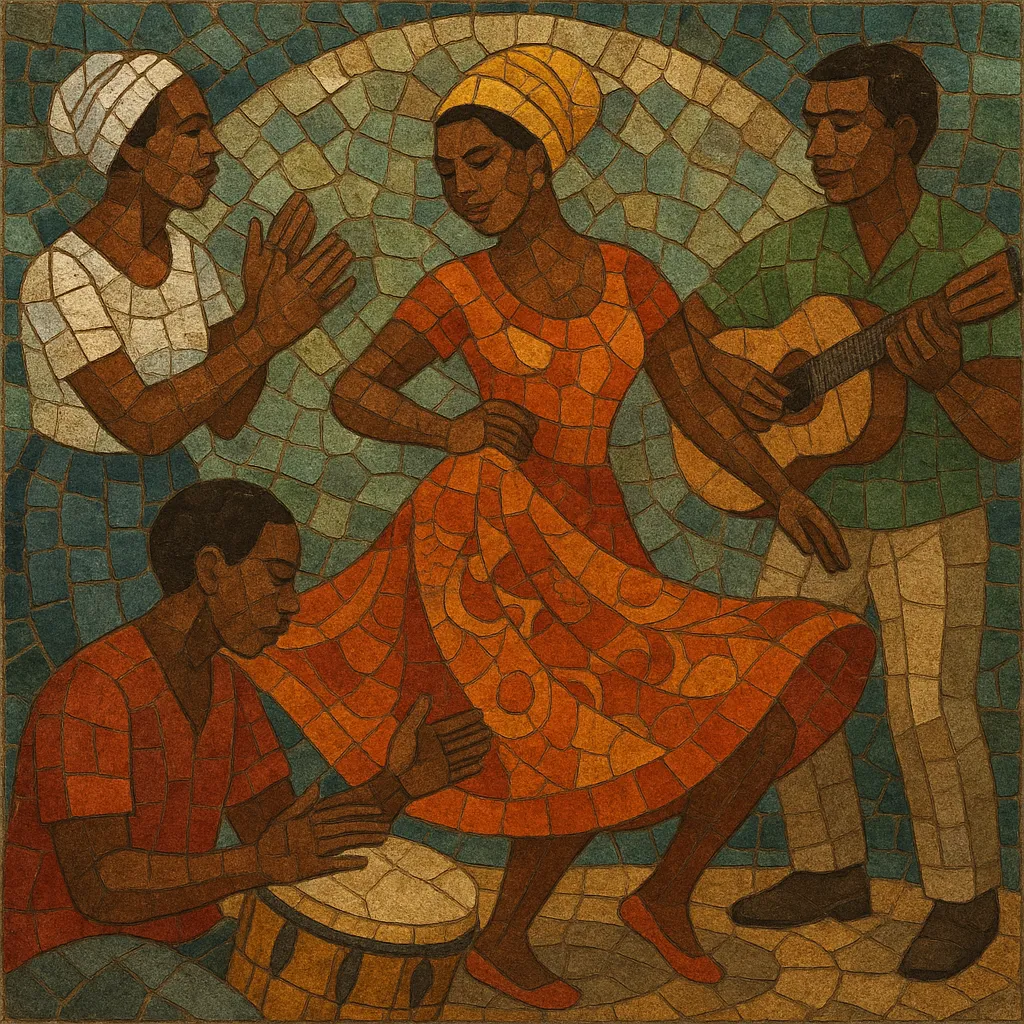Samba de roda is a traditional Afro‑Brazilian music-and-dance form from the Recôncavo region of Bahia, Brazil. It is performed in a circle (roda) with call-and-response singing, handclaps, and a small ensemble of percussion and plucked string instruments.
Musically it typically uses a lilting 2/4 samba groove with strong syncopation, a lead singer (cantador/a) who improvises verses, and a chorus that responds in refrain. Two core song-dance modalities are common: the slower, more declamatory chula (often opening the gathering) and the faster, more animated samba corrido (when dancers enter the circle).
The dance highlights the umbigada—an inviting belly-bump gesture—along with playful steps and spins. It is socially rooted in Afro‑Bahian festivities, religious gatherings (including candomblé contexts), and community celebrations, and it played a pivotal role in shaping urban samba across Brazil.
Samba de roda emerged in the 1800s in the sugarcane towns and fishing communities of the Recôncavo Baiano. Enslaved and formerly enslaved Africans—especially of Yoruba and other West African origins—blended rhythmic practices such as batuque with Portuguese song forms like chula and broader Portuguese folk traditions. The result was a circle-based, participatory music and dance marked by call-and-response, extemporized verses, and the iconic umbigada.
Throughout the late 19th and early 20th centuries, samba de roda functioned as social glue at saint festivals, neighborhood parties, and candomblé-related gatherings. Its instrumentation—pandeiro, atabaque, reco‑reco, ganzá, plus viola, cavaquinho, or guitar—supported a portable, communal format. The genre’s rhythmic feel and song structure informed the early development of urban samba styles as migration and musical exchange linked Bahia to cities like Rio de Janeiro.
The performance practice, swing, and repertoire of samba de roda profoundly influenced modern samba, from partido alto and samba de gafieira to pagode, samba‑jazz, and ultimately bossa nova (by way of samba’s harmonic-rhythmic language). Esteemed sambadores/sambadeiras and community groups kept local variants (including samba chula) alive and transmitted them intergenerationally.
In 2005, UNESCO proclaimed Samba de Roda of the Recôncavo of Bahia a Masterpiece of the Oral and Intangible Heritage of Humanity (now on the Representative List). Documentation, apprenticeships, and community cultural policies have bolstered its visibility while respecting its grassroots character, ensuring the roda remains a living, evolving tradition.


